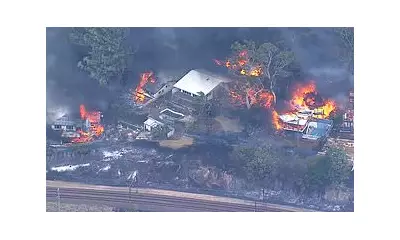
Boston's multi-million pound Seaport development, once hailed as a triumph of urban regeneration, now faces an existential threat from rising sea levels that could see the entire district regularly submerged by 2050, according to startling new climate projections.
The Ticking Time Bomb Beneath Boston's Waterfront
Advanced climate modelling reveals that what were once considered hundred-year flood events could become annual occurrences within the next three decades. The Seaport area, home to luxury apartments, corporate headquarters and cultural venues, sits on particularly vulnerable reclaimed land that's essentially a giant floodplain waiting to happen.
What the Flood Maps Show
Detailed projections indicate that during high tides and storm surges, water could inundate:
- Major transportation corridors including key access roads
- Underground parking facilities and building basements
- Critical utility infrastructure and electrical substations
- Ground-floor commercial spaces and residential units
The economic implications are staggering, with billions in property value and vital infrastructure at risk of permanent damage or complete loss.
Why the Seaport is Particularly Vulnerable
Unlike older parts of Boston built on higher ground, the Seaport district was constructed on land that was essentially created by filling in tidal flats. This geological reality, combined with its low elevation and extensive waterfront exposure, makes it disproportionately susceptible to sea level rise.
"We're looking at a perfect storm of factors," explains one climate scientist involved in the research. "The combination of land subsidence, rising sea levels and more frequent extreme weather events creates a scenario where permanent inundation becomes inevitable without massive intervention."
The Human and Economic Cost
Beyond the obvious property damage, regular flooding would:
- Displace thousands of residents and workers
- Paralyse transportation networks critical to the regional economy
- Compromise freshwater supplies and sewage systems
- Create public health hazards from contaminated floodwaters
The research serves as both a warning and a call to action for urban planners, policymakers and property owners who must now confront the reality that some of today's most valuable real estate could become tomorrow's underwater ghost town.





